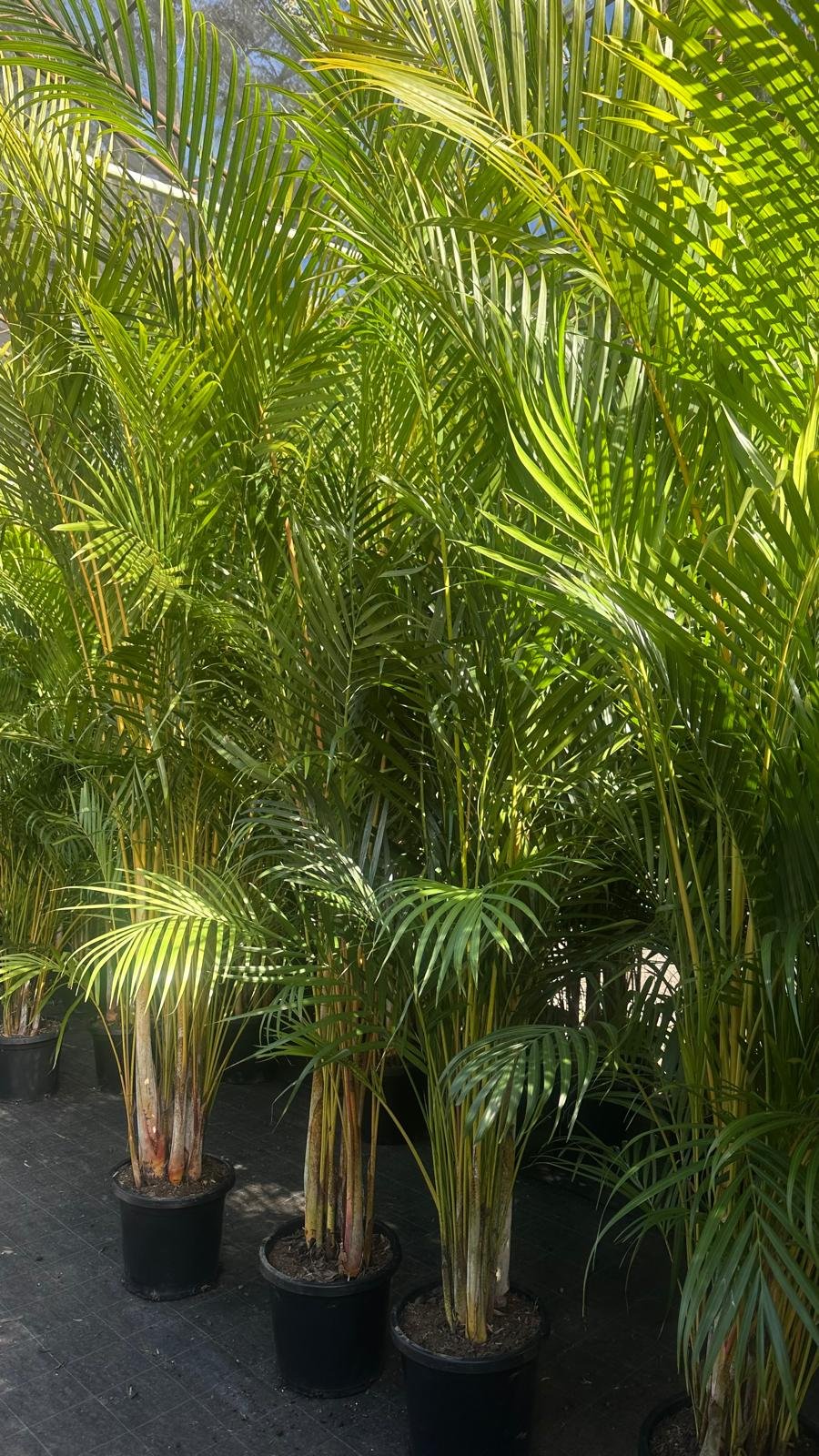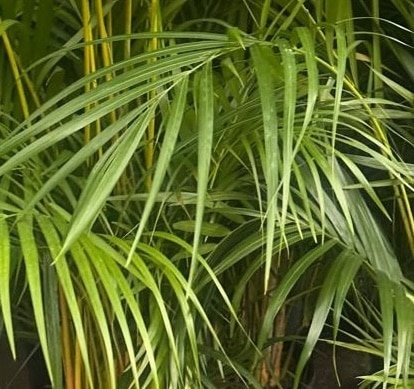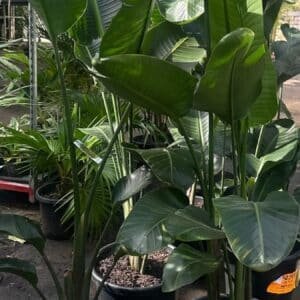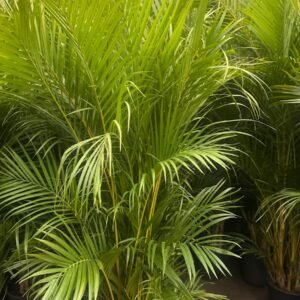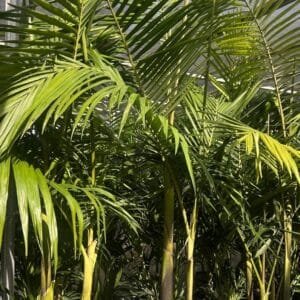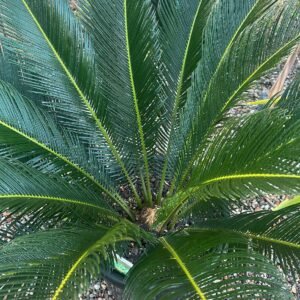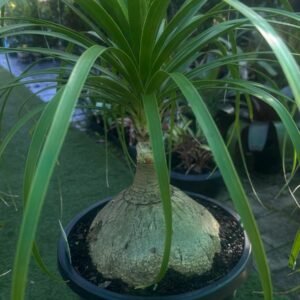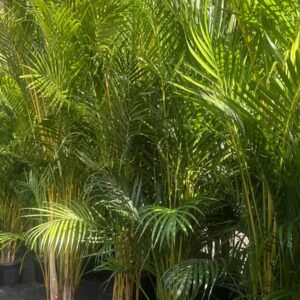The Golden Cane Palm (Dypsis lutescens) is a widely popular clumping palm, celebrated for its tropical beauty and easy-going nature. It’s characterised by its multi-stemmed growth habit, with each stem showcasing a striking golden-yellow colour, often with dark speckles. The fronds are long, gracefully arching, and a vibrant yellow-green, earning the plant its common name. This palm is a favourite for creating a dense, lush screen in gardens and is equally at home as a statement piece in a pot, especially indoors.
General Care & Usage Tips
- Position: It performs best in a full sun to part shade position outdoors. When grown indoors, it needs a bright spot with good light to maintain its golden hue and prevent legginess. Avoid placing it in direct, harsh afternoon sun, which can scorch the fronds.
- Soil: Prefers rich, well-draining soil. If potting, a good quality potting mix with some added sand or perlite will work well.
- Watering: Keep the soil consistently moist during the warmer months, but be sure it’s not waterlogged. Allow the top few centimetres of soil to dry out between waterings. Reduce watering in winter.
- Fertiliser: Use a slow-release, high-quality palm fertiliser in spring and again in late summer to promote vigorous, healthy growth.
- Pruning: Pruning is minimal. Simply trim off any old, browning, or dead fronds as close to the base as possible to keep the plant tidy and healthy.
- Caring Tips:
- The Golden Cane Palm loves humidity, which is why it thrives in tropical and subtropical gardens. To increase humidity for an indoor plant, mist the leaves or place it in a bathroom.
- Brown tips on the fronds can be a sign of under-watering, over-watering, or a build-up of salts in the soil. Try flushing the pot with water to clear out any salt build-up.
- It’s sensitive to fluoride, which can be a component of some tap water. If you notice a lot of brown tips, consider using rainwater or filtered water.
- It is non-toxic to pets and people, which is great for a family home.
- Usage: Fantastic for creating a tropical screen or hedge in the garden. Indoors, its clumping habit makes it a perfect living sculpture for a bright corner, and it’s known for its air-purifying qualities.

